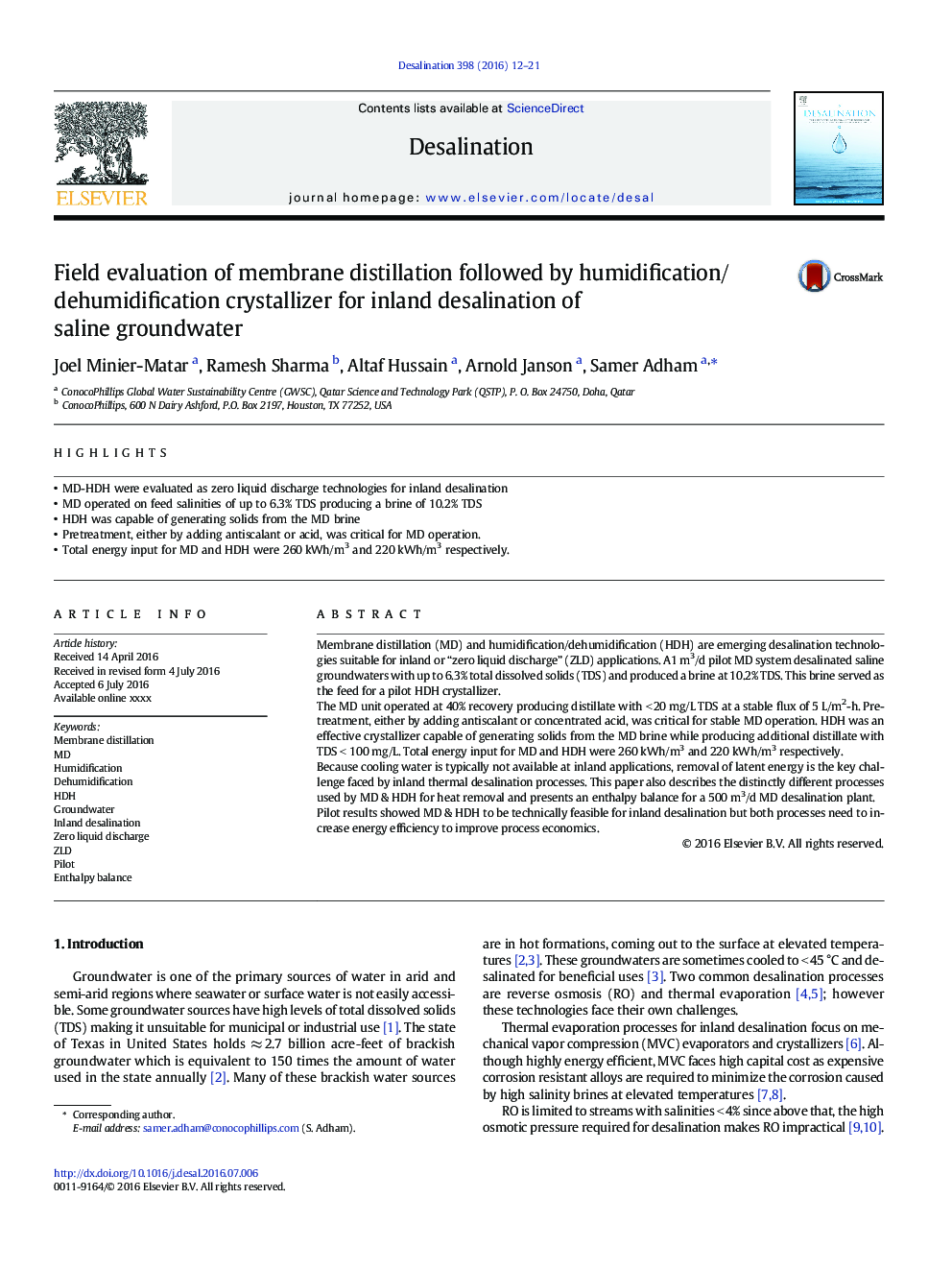| Article ID | Journal | Published Year | Pages | File Type |
|---|---|---|---|---|
| 622687 | Desalination | 2016 | 10 Pages |
•MD-HDH were evaluated as zero liquid discharge technologies for inland desalination•MD operated on feed salinities of up to 6.3% TDS producing a brine of 10.2% TDS•HDH was capable of generating solids from the MD brine•Pretreatment, either by adding antiscalant or acid, was critical for MD operation.•Total energy input for MD and HDH were 260 kWh/m3 and 220 kWh/m3 respectively.
Membrane distillation (MD) and humidification/dehumidification (HDH) are emerging desalination technologies suitable for inland or “zero liquid discharge” (ZLD) applications. A1 m3/d pilot MD system desalinated saline groundwaters with up to 6.3% total dissolved solids (TDS) and produced a brine at 10.2% TDS. This brine served as the feed for a pilot HDH crystallizer.The MD unit operated at 40% recovery producing distillate with < 20 mg/L TDS at a stable flux of 5 L/m2-h. Pretreatment, either by adding antiscalant or concentrated acid, was critical for stable MD operation. HDH was an effective crystallizer capable of generating solids from the MD brine while producing additional distillate with TDS < 100 mg/L. Total energy input for MD and HDH were 260 kWh/m3 and 220 kWh/m3 respectively.Because cooling water is typically not available at inland applications, removal of latent energy is the key challenge faced by inland thermal desalination processes. This paper also describes the distinctly different processes used by MD & HDH for heat removal and presents an enthalpy balance for a 500 m3/d MD desalination plant.Pilot results showed MD & HDH to be technically feasible for inland desalination but both processes need to increase energy efficiency to improve process economics.
